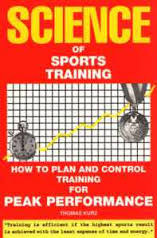Thinking Fast and Slow: Book Review
Leave a Comment“What You See Is All There Is (WYSIATI)”
 is a common flaw we can all suffer from: our System 1 brain retrieves instant information and makes decisions based on currently activated ideas. Unfortunately it fails to allow for information outside of that.
is a common flaw we can all suffer from: our System 1 brain retrieves instant information and makes decisions based on currently activated ideas. Unfortunately it fails to allow for information outside of that.
(Those of you who watch the immense self belief and ignorance of people on “The Apprentice” may recognise this!),
Our System 2 brain is better at a more systematic and careful review of evidence, but is heavily influenced by System 1.
This is thinking fast and thinking slow according to Daniel Kahneman in this excellent book.
Danger of Overconfidence
WYSIATI leads to overconfidence. If we make decisions based on our limited knowledge, then we build stories around that knowledge to justify our decision making.
If we have made a decision and we feel good about it, then we can easily ignore any further information that comes our way that may counter our initial decision.
 In fact, people who only see one side of the argument (or limited evidence) are much more confident in their decisions than people who have seen all the evidence available.
In fact, people who only see one side of the argument (or limited evidence) are much more confident in their decisions than people who have seen all the evidence available.
This is due to our brains being good at pattern recognition and formations. It makes sense from an evolutionary purpose to be able to quickly recognise danger and respond (System 1), compared to having to sit down and do a cost:benefit ratio analysis (System 2).
The Muller Lyer illusion is an example of System1/ System 2 conflicts. Our initial impression is that the lines are different lengths.
It is only when we measure them that we realise they are the same. However, we have to keep reminding our System 1 this is the case!
This video shows a few examples of the System 1 and System 2 thinking and some exercises that will help you understand the concept.
Plausable versus Probable
One of the interesting themes of the book was our inability to understand statistics. This has major implications for our lives as politicians and policy makers also fail to comprehend the difference.
People will ignore a statistical fact “50% of children drop out of sport at 16” but will remember individual stories of girls being give short thrift by their schools compared to boys.
 We also place a lot of faith in data collected from small samples (The pseudo sport science world is especially bad at this). The variances that occur in small samples mean that they often appear to be the best and worst cases. For example “people living in rural counties of the USA have the highest incidence of cancer“.
We also place a lot of faith in data collected from small samples (The pseudo sport science world is especially bad at this). The variances that occur in small samples mean that they often appear to be the best and worst cases. For example “people living in rural counties of the USA have the highest incidence of cancer“.
Population density is lowest in these counties so a natural variance around the mean causes a blip. We pay attention to the story and so end up with a world belief that is simpler than it really is.
Worst still, we then use System 1 thinking to explain this “fact”: it must be that rural people smoke and drink more than their better educated urban peers!
 Luck pays a big part in a lot of events, and Kahneman covers this in a lot of detail.
Luck pays a big part in a lot of events, and Kahneman covers this in a lot of detail.
He debunks the “hot hand” myth in sports: a good run of scores is likely to end with a regression to the mean. Similarly a good player who is scoring below average will return out of their “slump”.
This has nothing to do with skill, changing their shoes, or even (much as I hate to say it) better coaching: it is a statistical anomaly.
Summary
A tough start to get into this book, but worth the effort. Unfortunately (or perhaps fortunately) it has made me question my ability to make any decisions!
What I had previously thought of sound judgement is probably littered with bias and errors of thinking.
The bottom line is that we need to switch between thinking fast and slow: both are necessary for our well being and to thrive. The trick is to recognise when to use which one. For me I can use fast thinking when coaching in the gym, based on my experience and lots of reading.
When choosing a new car, or buying a house, I need to use slow thinking as I have little knowledge or expertise in these areas. In fact, using System 1 to make these decisions could be very costly.
Recommended read: especially for students!
See our further recommended reading for sports coaches and p.e. teachers


